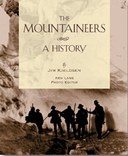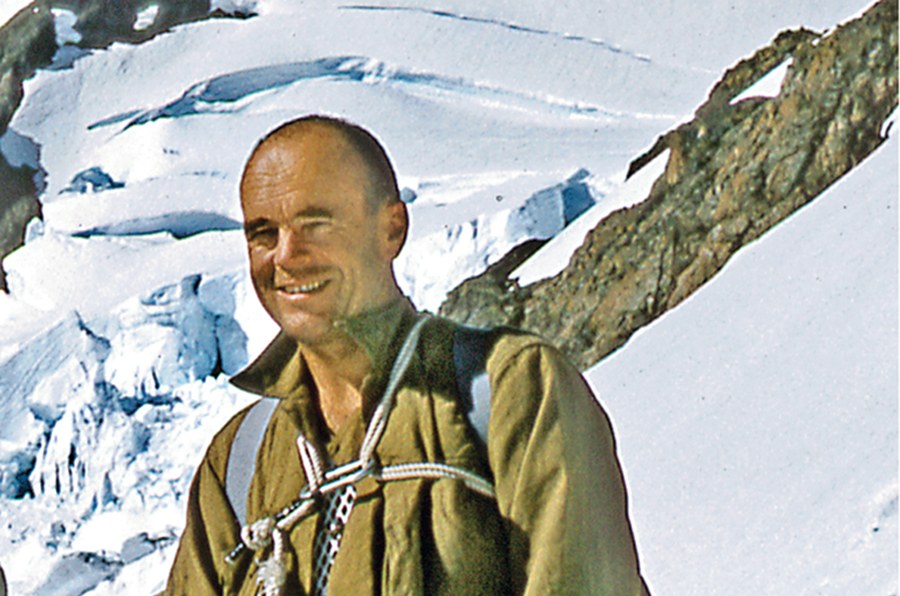
an excerpt from The Mountaineers: A History, with an introduction by Mary Hsue
John Davis’ imprint on Seattle is inspiring. In addition to being the founder of Davis, Wright, Tremaine law firm in 1944, John served on the boards of many nonprofits, including Whitman College, the Pacific Science Center, and the Seattle Symphony. The Mountaineers was also a recipient of John’s strong commitment to giving back to his community. He volunteered as a leader at The Mountaineers serving as board president in 1968, climbing committee chair in 1967, as an editor of the second edition of Mountaineering: Freedom of the Hills, and as a co-founder of the Mountaineers Foundation. A lifetime member since 1959, John passed away in April of 2015 at the age of 101.
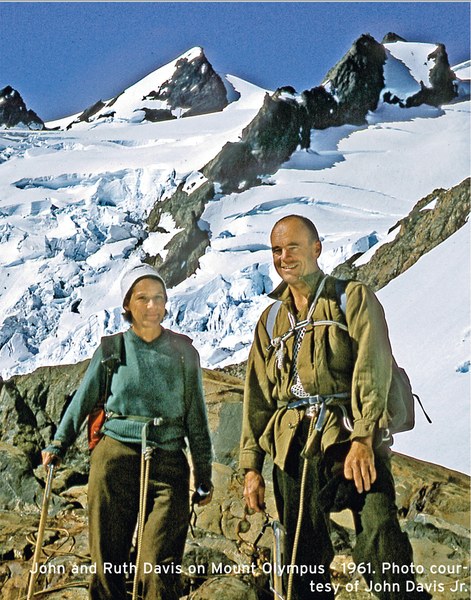
“I love to go a-wandering,
Along the mountain track,
And as I go, I love to sing,
My knapsack on my back.”
“Dad loved to sing songs as a family when we were out of doors. One favorite song was The Happy Wanderer,” said Bruce Davis, one of John and Ruth Davis’s six children. “As dad was close to dying, we as a family surrounded his bed and sang the song. Dad sang along with us. Mountain climbing was more than recreation – it was his spiritual practice.”
It’s clear that John Davis’ outdoor experience was deeply important to him. “My brother and I were Boy Scouts and my dad was a Boy Scout leader,” Bruce recalls. “Most of the Boy Scout leaders were Mountaineers. One of the leaders was Warren Spickard, a famous mountaineer, and world-class climber.” It was through that experience that John became very involved with The Mountaineers.
When Bruce was 14 years-old, he took The Mountaineers basic climbing course with his dad and mom. "That summer Pete Schoening was leading a Mountaineers climb up the Emmons Glacier on Mt. Rainier," he said. "I remember Pete counseling us to breathe deeply to help deal with the elevation. Dad, mom, and I made up one rope team, and we summited Rainier at 9:30am.” That was the first of several climbs they did that summer. “When I was 15 years-old we climbed the 6 majors together.”
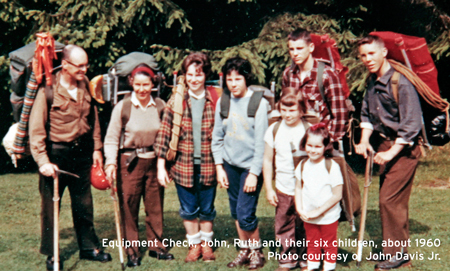
John was clearly a proud Mountaineer who was passionate about sharing his love of the outdoors with his family and with many Mountaineers members. In a little-known story below, you’ll see how The Mountaineers benefited from John’s commitment to offering legal expertise at a time when its clubhouse was threatened in 1982.
The story below is an excerpt from The Mountaineers: A History, published by Mountaineers Books.
Since its founding and until The Mountaineers moved into its current home in Magnuson Park, meeting places varied from Seattle Chamber of Commerce Hall to the Rialto Building downtown, to Pike street above the Green Apple Cafe on Capitol Hill.
The Mountaineers bought the building for eighty thousand dollars and, in 1968, after much renovation, moved in. The board learned to live with the tavern music that drifted up from (the restaurant and tavern) below, and eventually the young Mountaineers Books operation also moved into the space. The club remained at that site for fifteen years without further discussion of moving, and might still be there if the property hadn’t been so desirable for development.
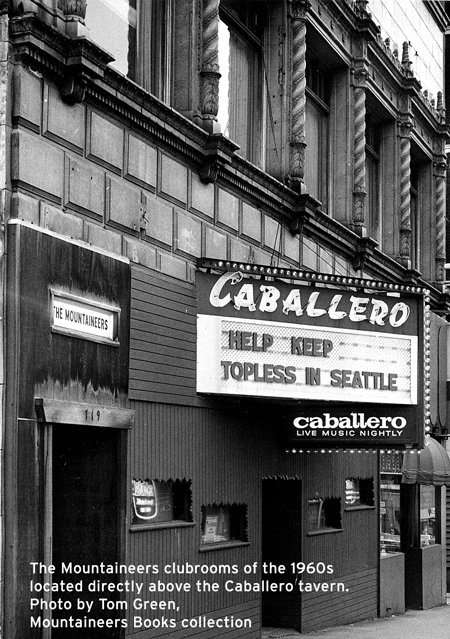
But on December 27, 1982, the ax began to fall. Club officials were advised that the proposed Washington State Convention and Trade Center was considering a freeway lid on Pike Street as one of three potential sites. This would require taking over most of The Mountaineers property.
The state proposed to offer “fair market value,” but that amount was far less than its actual resale value, and the convention center threatened condemnation if The Mountaineers refused to sell. Convention center developers quickly obtained permission to buy out all adjacent property owners, leaving The Mountaineers as the lone holdout.
President Errol Nelson wrote to the convention center, outlining The Mountaineers’ requirements for selling: It could incur no capital debt or mortgage costs; future operating costs could not measurably exceed present operating costs; if temporary relocation were necessary, these expenses would be paid by the convention center.
The letter was ignored. Nelson was forced to report back to the club that the convention center apparently assumed there was no reason to listen to The Mountaineers because they could simply condemn the property. The club needed a heavyweight in the ring to slug it out for them.
John Davis weighed in. An attorney and past club president, Davis wrote to the chairman of the Washington State Convention and Trade Center Commission on February 16, 1983, advising him that if the center chose the freeway site it should be prepared to leave the club’s property alone. Copies were sent to every member of the commission. This was no idle warning from a minor downtown lawyer but a shot across the bow from a high-powered gun. Many of the people Davis contacted were long-standing friends and knew his abilities in court. A prolonged fight could hold up the convention center, which was on a fast track. The commission responded quickly, saying the input of The Mountaineers was important, but it was still considering which site to choose.
However, when Nelson asked to present the findings of an architect hired by the club to explore building options, he was granted only five minutes at the next meeting. At about this time, Davis was joined by one of the most unlikely allies in the long history of the club, downtown developer Martin Selig. A new club member, Selig had agreed to become part of the negotiating team for The Mountaineers.
Suddenly, the convention center found itself in a fair fight. Everybody knew Selig, who had a reputation for shrewd bargaining and courtroom dogfights from which he seemed to emerge unscathed.
Just as suddenly, an attorney for the convention center called Davis and asked for permission to negotiate on behalf of The Mountaineers to sell the club property in a complex real estate transaction in which the developer would purchase the property for resale to the convention center. Since the developer already owned most of the other property in the area, all would be sold together as a package deal.
The hitch was that the offer was for only $200 per square foot. The Mountaineers had looked at the Norway Center near the Seattle waterfront as the most practical clubhouse site available, and the club needed $278 per square foot, or $2 million, for its property in order to buy the Norway Center. Selig sat down with Davis and the convention center attorney to spell out The Mountaineers’ position.
The club prepared its own offer of $2 million in cash for the Norway Center, contingent on being able to negotiate the sale of its Pike Street building by an August 15 deadline. Nelson advised the convention center and its lawyers that if negotiations were not completed by that date, The Mountaineers “probably would be content to stay at its present site” and hold up the convention center in court.
After complex negotiations, The Mountaineers agreed to sell its property to the developer for $2,065,000, with the developer to pay the club’s moving costs. The Mountaineers assigned its right to purchase the Norway Center to the developer, which was to buy the Norway Center for the club, then let the title pass directly to The Mountaineers. This complicated real estate agreement, which could only have been thought up by people with long experience in downtown property transactions, closed on September 8, 1983.
The Seattle Weekly newspaper summed up the negotiations on September 28: “Sidelight on Washington State Convention Center negotiations: It pays to know with whom you’re dealing. A few months ago, Convention Center types were rather loudly offering to cajole, legally condemn or bully The Mountaineers into giving up their little clubhouse on the center site. Then the venerable outdoor group brought in its own pair of negotiator members: skyscraper king Martin Selig and high –powered attorney John Davis from Davis, Wright, Todd, Riese and Jones. The Mountaineers are now happily settling into a newly purchased home at the Norway Center.”
The Mountaineers clubhouse remained at the former Norway Center at 300 Third Avenue West for some twenty-five years until the organization moved to its current location in Magnuson Park.
 Mary Hsue
Mary Hsue
